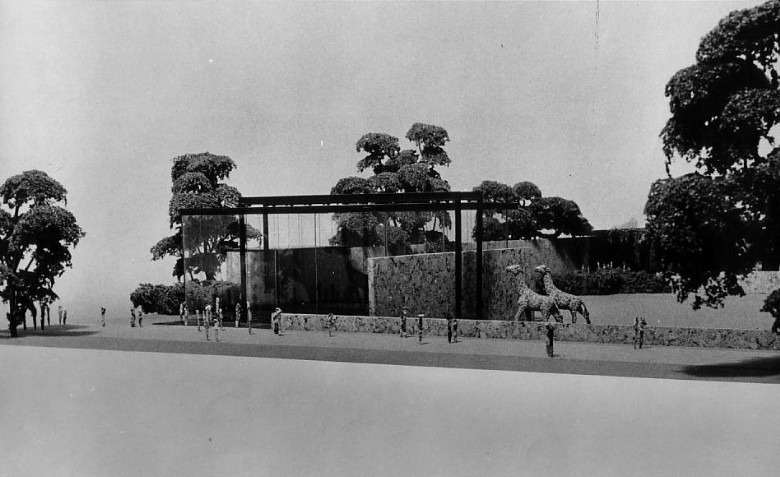
|
THE WORLD WILDLIFE FEDERATION PAVILION by Bruno Paul Stenson, M.A. The first proposal for a World Wildlife Federation Pavilion at Expo 67 was for a modern-day Noah's Ark, a floating pavilion which could be towed to other locations after Expo 67. The expected building cost for this proposal was $500,000. The purpose of the pavilion would have been to draw attention to the plight of the world's wildlife, particularly the threatened species.
Three exhibition areas were planned. In Section A,
exhibits (some of them animated) were to highlight the past, namely extinct
animals such as the Dodo, the Quagga, the Great Auk and others. Section B was
to show the present with endangered species such as the Indian Lion, the Javan
Rhinoceros and the Whooping Crane. Section C, predictably enough, was to
represent the future with examples of species which were saved from
extinction, including the American Bison, the Key West Deer and the Hawaiian
Goose.
An auditorium was to be built for lectures, a zoo
was to be dedicated to conservation, and a souvenir stall was to have
postcards, books, magazines and model animals for sale.
As late as January 21, 1967 -- a mere 3 months
before Expo was to open -- Gerald Iles, Managing Director of the Zoological
Society of Montréal, was writing to John Fisher of the Centennial Commission
in the hope of getting the Commission's support for this pavilion. In the end,
even with a proposal for a land-based version of the pavilion (see photos 1
and 2), the World Wildlife Federation project was never built. Instead, exotic
animals were represented at the Safari (at La Ronde) and Canadian wildlife in
Notre-Dame Park at the westernmost end of Île Notre-Dame (sponsored by
the British-American Oil Company).
(Photo sources: Architects models, Bruno Paul
Stenson Expo 67 Archive; Message from Prince Bernhard, Man and His World
Needs a New Ark brochure, back page.) |
1/3

